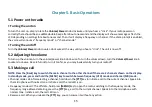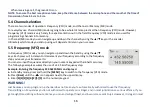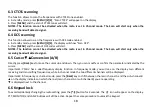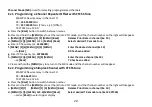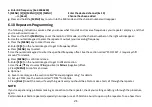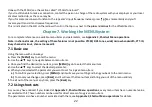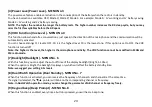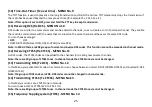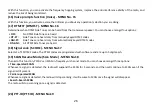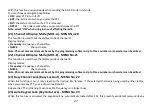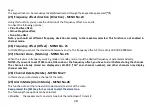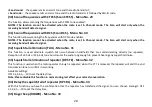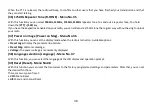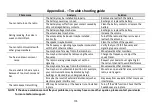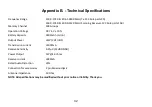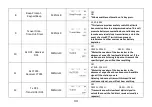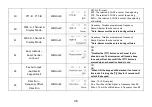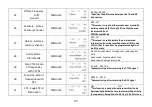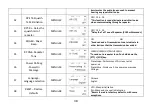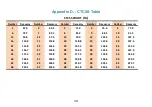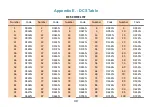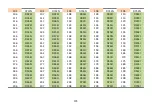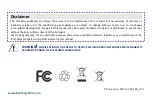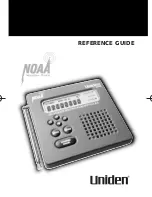
29
•
Send sound:
the speaker emits an alarm tone and the radio transmits it;
•
Send code:
the speaker emits an alarm tone and the radio transmits it followed by ANI-ID code.
(30) Scan of frequencies with CTCSS (Scan CTCSS) - Menu No. 29
The function allows scanning the frequencies with CTCSS tone enabled.
NOTES: The function cannot be activated when the radio is set in Channel mode. The Scan will start only when the
receiving band will detect a signal.
(31) Scan of frequencies with DCS (Scan DCS) - Menu No. 30
This function allows scanning the frequencies with DCS code enabled.
NOTES: The function cannot be activated when the radio is set in Channel mode. The Scan will start only when the
receiving band will detect a signal.
(32) Squelch tail elimination (TAIL) - Menu No. 31
This function is used eliminate squelch tail noise between handhelds that are communicating directly (no repeater).
Reception of a 55 Hz or 134.4 Hz tone burst mutes the audio long enough to prevent hearing any squelch tail noise.
(33) Squelch tail elimination of repeater (RP-STE) - Menu No. 32
This function is used when the radio operates through a repeater; when the PTT is released, the repeater will emit the end
transmission tone to confirm it is working.
Available settings:
OFF 1,2,3,4,5,….10 to set the delay time.
Note: Please disable this function in normal using, lest affect your normal conversation.
(34) Delay the squelch tail of repeater (RPT-RL) - Menu No.33
With this function you have the confirmation that the repeater has transferred the signal. You can choose amongst: OFF
1,2,3,4,5,….10 to set the delay time.
(35) Roger beep (ROGER) - Menu No. 34
Summary of Contents for Pofung P10UV Series
Page 1: ...USER S MANUAL...
Page 13: ...10 Chapter4 Radio Overview...

